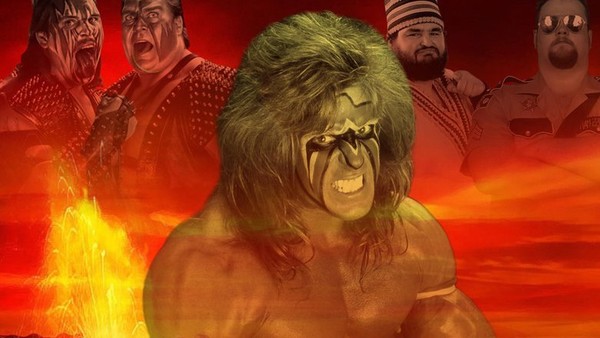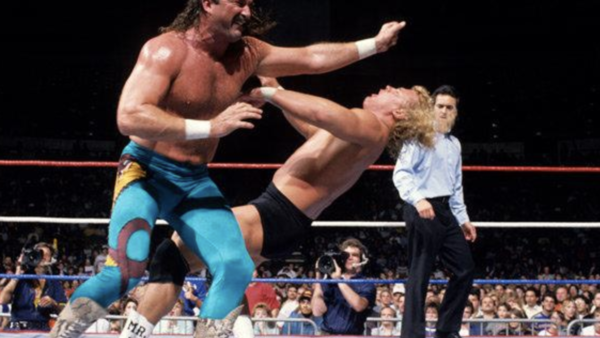10 Fascinating WWE Survivor Series 1988 Facts
The Mega Powers stand tall to end another Thanksgiving fracas.

As far as sequels go, the 1988 Survivor Series wasn't quite as epic as its 1987 predecessor, but still rates very favorably among the best WWE fare of the day. Like 1987, the 1988 show took place in Richfield, Ohio on Thanksgiving night, and featured four elimination matches, including a 20-man bout with ten steady tag teams. If 1987's version was an A++, 1988 was a modest and respectable A-.
The 1988 show is most notable as one of the last positive stands for The Mega Powers, consisting of WWE Champion Macho Man Randy Savage, and his bestest buddy in the whole wide world, Hulk Hogan. When The Hulkster celebrates a little too enthusiastically with Miss Elizabeth (for Savage's liking, anyway) in the show's closing stages, a little kernel of foreshadowing was cast, setting up the necessary acrimony for building to WrestleMania 5.
The night was filled with a who's who of kayfabe-era stars, from Ultimate Warrior to Ted Dibiase to Andre the Giant to Jake Roberts, and plenty of iconography in between. In all, 19 of the 50 wrestlers taking part at the 1988 Survivor Series are in WWE's Hall of Fame, and plenty of the remaining 31 have a strong case for inclusion. All in all, the event is simple fun, and remains more than watchable today.
Here are ten facts about the 1988 Survivor Series you may not have known.
10. The Coliseum Video Version Was Brutally Edited

Whatsamatter, you wanted watch the whole show or something? Before WWE re-released the show as part of a 2009 DVD collection, your only hope was to hit up eBay for someone's personal recording of the pay-per-view. That's because the Coliseum Video version took a chainsaw to much of the show.
For reasons that aren't clear, two of the matches (Ultimate Warrior's team vs. Honky Tonk Man's team, Jake Roberts' team vs. Andre the Giant's team) are whittled down to virtually nothing, jumping from one elimination sequence to the next. Meanwhile, the 20-man tag, which spans more than 40 minutes, is shown in full. Double-you-tee-eff?
Other WWE events of the time were edited for time reasons, with filler bits cut out to fit the event better onto video tape. Cutting filler is one thing, but chopping down entire matches into sped-up highlight packages for an official pay-per-view release is just bizarre.